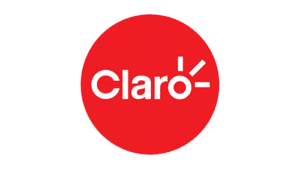In our latest blog, Tim Pearson continues the series exploring the insight gained through a recent NAGRA interview with a pirate. He reviews how pirates operate and distribute their services and how the media and entertainment industry’s robust defense is often the best offence.
If you’ve read the first part in this blog series, you’ll be aware that NAGRA recently interviewed a pirate to gain first-hand insight into the motivations, methods and results of pirate activity. If you missed part one, where I explored a pirate’s human motivation, you can catch-up here.
The Hidden Foe in Plain Sight
Today’s video streaming landscape is heavily fragmented. Multiple services all offer specific content and if you’re after a particular genre of content, no matter how niche, there’s a service for you. However, this increased competition among service providers is not the end of the story. Hard pressed consumers are also sourcing their favorite content from pirate services – meaning legitimate services are competing with their pirate foes.
In the smartcard era, faced with complex hardware-based cryptography, piracy was technically complex although, as the pirate points out, the overheads were low. A simple script did the job and when a vendor countermeasure was deployed, the same script needed updating. Fast forward to the IPTV/ streaming era and the situation is different.
Pirates are now software experts and have larger overheads, estimated to be about 30% of their ‘revenue’. Equally, we learn that they have their own, hard to come by datacenters that can handle the illegal traffic being routed through them. At a technical level, the pirate industry has a cast of contributors that rivals those of the premium content they seek. Originally it was a technical exercise to just access the content. The pirate told us, ‘I thought I can write website code, I can modify that script, I’m going to have my own website.’ This has subsequently expanded with the average pirate network relying on business, marketing and technical professionals through which to create highly realistic services that lure consumers in with a promise of low prices and infinite levels of content.
If You Can’t Stand the Heat…
Today’s pirate enterprises can be vast in size. Often starting as a simple website that has ~1,000 subscribers, they can scale to become major organizations. They grow through syndicating services (for a percentage of revenue) to resellers who in turn sell to more subscribers. This means a single pirate enterprise can quickly support tens of thousands of subscribers. When this is scaled further, some of the largest pirate organizations support millions of subscribers through the same approach. However, the pirate is quick to point out that with scale comes pressure – both financial and legal. Put another way, the larger your pirate enterprise gets, the more it costs to run and the more attention it receives from anti-piracy organizations who represent an industry intent on stopping this illegal activity. Success, the pirate tells us, depends on the level of heat you can bear. He mentions that large pirate IPTV organizations with full marketing organizations simply imploded as they couldn’t handle the external industry pressure. That’s good news for the industry as it shows deterrent and investigative techniques deliver results. But what about the smaller providers that may be operating under the radar?
The Barber Shop Guy
If subscribers don’t engage with pirate services online, they’re just as likely, we learnt, to purchase services at local outlets such as their local barbershop or corner store. Pirates build distribution networks which rely on effective marketing and the re-sellers often have scant knowledge of what’s technically going on under the hood. This is deliberate as if the marketing end of the operation gets shut down, the technical operations can re-launch elsewhere. This means that your average barbershop or corner store can be selling multiple pirate services and can quickly adapt if they need to. One example is the KboxServ operation in Switzerland that sold boxes for $160 through retail stores and was successfully shut down through a Canal+ and NAGRA operation.
Pirate Business Models
In the main, pirates make money from selling too-good-to-be-true offers for illicit gain. Within the pirate economy however, there are a multitude of business models driven by a pirate’s motivation. Some are experts in a particular group of channels and undertake to always keep them ‘on-air’. Some focus on re-selling to others and take a percentage of the re-sellers’ revenues. Others front the pirate service with highly functional websites that may even include subscriber support options. Then there are those who blend broader cybercrime with piracy. Here, as part of the subscriber’s service enablement they will also deploy hidden malware onto devices which mine identity and financial information that’s then traded on the dark web. We also asked if, given all the different approaches, pirates competed. They do and we were surprised to learn that this also includes pirating pirate content which in the streaming era is a lot more commonplace than it was in the smartcard era; largely due to how accessible content is. Each of these approaches demonstrates the scale of the pirate ecosystem intent on damaging our industry. In other words, the services that are advertised on the internet are the tip of the pirate iceberg.
Intelligence-Led Investigations
In looking at the motivations and ecosystem of a pirate, it’s clear that the deterrent offered by the industry today does deliver results. Solutions such as forensic watermarking and anti-piracy intelligence help to heap the pressure onto pirate organizations who, as the pirate explained, may simply implode under the pressure. However, for those that don’t, different approaches are required.
NAGRA Anti-Piracy services are designed to generate intelligence on pirate operations, explore the wider ecosystem of actors and then drive a series of investigations with the aim of a successful prosecution. Intelligence gathering is a constant activity. Every day, new pieces of intelligence are identified through several NAGRA proprietary tools that scan both the internet and other networks for intelligence that will ultimately unseat a piracy ring. This intelligence, combined with wider ecosystem insight, is then used as part of a civil or criminal complaint that seeks a prosecution.
To gain maximum defense requires a strong offence and that’s why NAGRA is a proud partner of several anti-piracy coalitions and industry bodies across the globe where our intelligence is used to achieve successful prosecutions; the most recent being Operation 404.5 in Brazil.
Get In Touch to Learn More!
To learn more about NAGRA Anti-Piracy Services or how you can strengthen your defenses against streaming piracy through solutions such as NAGRA Active Streaming Protection, please contact us. Our team of experts are keen to help you identify the level of threat you’re facing and propose a pragmatic approach that will see your service lessen its exposure to pirate services. If you’d like to continue reading, part 3 of this series explores the pirate’s advice to the industry and can be found here.























